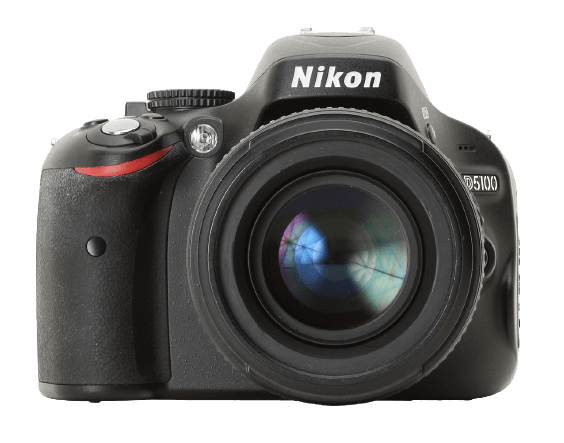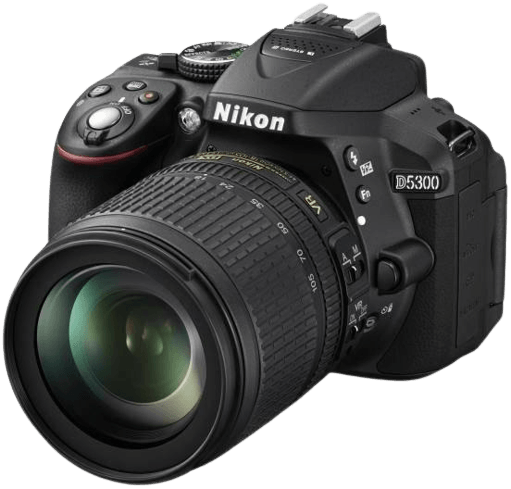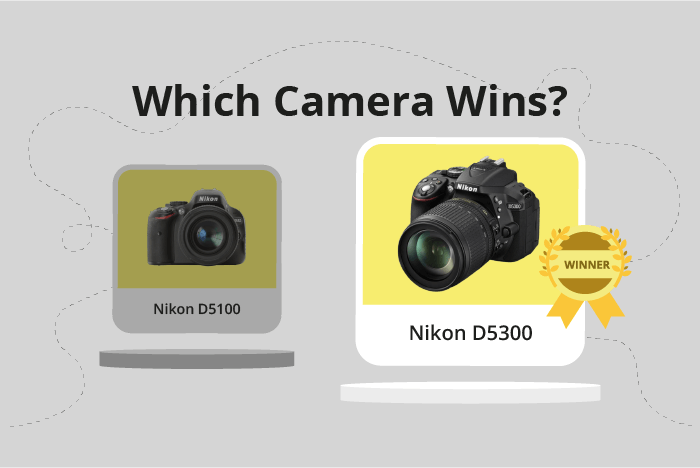Nikon D5100 vs D5300 Comparison
Nikon D5100

Nikon D5300

The Nikon D5300 is the victor in this comparison, earning a score of 57/100, while the Nikon D5100 trails behind at 49/100. Both cameras share the same DSLR type and similar launch prices, with the D5100 at $799 and the D5300 at $800. They also have comparable sizes, with the D5100 measuring 128 x 97 x 79mm and the D5300 at 125 x 98 x 76mm.
The D5300 outperforms the D5100 due to its higher score, signifying a better camera. Additionally, the D5300 is lighter, weighing 480g, compared to the D5100’s 560g. This makes the D5300 more portable and easier to handle during photography sessions.
However, the D5100 has its merits, as it was released earlier, in 2011. This could potentially make it more affordable for those on a budget. Despite the lower score, the D5100 remains a viable option for some photographers.
When comparing the Nikon D5100 and D5300, the latter emerges as the superior choice due to its higher score and lighter weight. However, the D5100 may still be suitable for those seeking a more budget-friendly option.
Nikon D5100 vs D5300 Overview and Optics
The Nikon D5300 emerges as the winner in the optics comparison with a score of 65 out of 100, while the Nikon D5100 scores 52 out of 100. Both cameras share several specifications, including the CMOS sensor type, APS-C sensor size, Nikon F DX lens mount, and lack of image stabilization.
The Nikon D5300 outperforms the D5100 in terms of megapixels, shooting speed, and processor. With 24.2 megapixels, the D5300 provides higher resolution images than the D5100’s 16.2 megapixels. This results in more detailed and sharper photos. The D5300 also has a faster shooting speed of 5 frames per second, compared to the D5100’s 4 frames per second, allowing for better capture of fast-moving subjects. Furthermore, the D5300 is equipped with the Expeed 4 processor, an upgrade from the D5100’s Expeed 2 processor. This improvement contributes to better image quality and faster performance.
However, the D5100 has its merits as well. The lower megapixel count can be beneficial for those who prioritize smaller file sizes and faster processing over higher resolution. Additionally, the D5100’s lower score does not necessarily imply poor performance; it simply means the D5300 has an edge in certain aspects.
Taking these factors into account, the Nikon D5300 offers superior optics performance with its higher resolution, faster shooting speed, and upgraded processor. The D5100, on the other hand, may be suitable for photographers who prefer smaller file sizes and can work with slightly lower performance. Ultimately, the choice between the two cameras depends on individual preferences and photography needs.
Nikon D5100 vs D5300 Video Performance
The Nikon D5300 has a higher video score, reflecting its solid performance in this area. However, the D5100 is still a good choice for casual use.
Both cameras are capable of recording Full HD video with a maximum resolution of 1920 x 1080 pixels. Additionally, the D5300 can capture video at a maximum frame rate of 60 frames per second, ensuring smooth and high-quality footage. The D5100 falls behind with a lower max frame rate.
Both models have a built-in time-lapse functionality, providing users with the opportunity to create dynamic and visually appealing videos.
Nikon D5100 vs D5300 Features and Benefits
The Nikon D5300 wins the features comparison with a score of 46/100, while the Nikon D5100 scores 41/100. Both cameras share some common specifications, including a 3-inch screen size, flip screen, and no touchscreen or Bluetooth capabilities. However, the D5300 surpasses the D5100 in several aspects, making it the better choice for those seeking more advanced features.
The winning camera, the Nikon D5300, boasts a larger screen size of 3.2 inches compared to the D5100’s 3 inches. Additionally, its screen resolution is higher at 1,037,000 dots, as opposed to the D5100’s 921,000 dots. These improvements provide a clearer and more enjoyable viewing experience for users. Furthermore, the D5300 is equipped with GPS and WIFI capabilities, which the D5100 lacks. These added features allow for easy geotagging of photos and wireless transfer of images, making the D5300 more convenient and versatile.
On the other hand, the Nikon D5100 offers no significant advantages over the D5300, as it shares most of its features with its competitor. The lower score of the D5100 reflects its fewer features and capabilities, but it may still be a suitable option for those who do not require the additional functionalities of the D5300.
After comparing the features of both cameras, it is clear that the Nikon D5300 is the superior choice due to its larger screen size, higher screen resolution, and additional GPS and WIFI capabilities. The Nikon D5100, while still a viable option, falls short in these areas and does not offer any notable advantages over the D5300.
Nikon D5100 vs D5300 Storage and Battery
The Nikon D5100 surpasses the Nikon D5300 in storage and battery with a score of 51/100 compared to the D5300’s 29/100. Both cameras share common specifications, including one memory card slot, compatibility with SD/SDHC/SDXC cards, and the absence of USB charging.
The D5100’s superior battery life of 2200 shots sets it apart from the D5300, which only offers 600 shots. This significant difference allows the D5100 to capture more images before requiring a battery change or recharge.
On the other hand, the D5300 uses the slightly more advanced EN-EL14a battery type, compared to the D5100’s EN-EL14. However, this advantage does not compensate for the considerable gap in battery life.
In terms of storage and battery, the Nikon D5100 outperforms the Nikon D5300 due to its longer battery life, making it a more reliable choice for extended shooting sessions. The D5300’s marginally advanced battery type does not offer any significant benefits in this comparison.
Nikon D5100 vs D5300 – Our Verdict
Are you still undecided about which camera is right for you? Have a look at these popular comparisons that feature the Nikon D5100 or the Nikon D5300:

